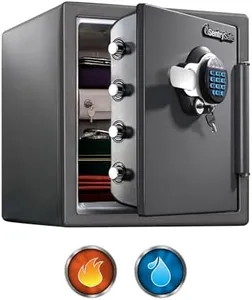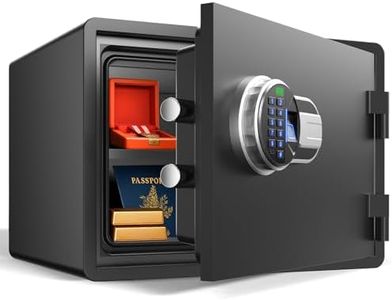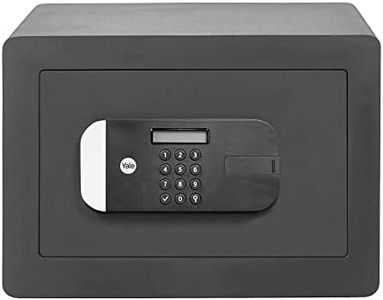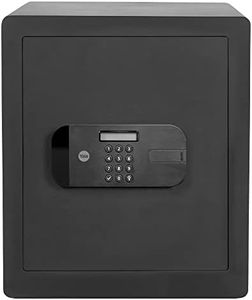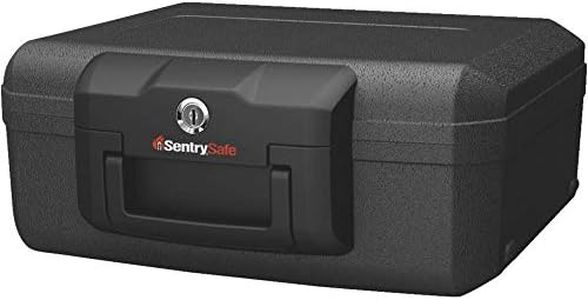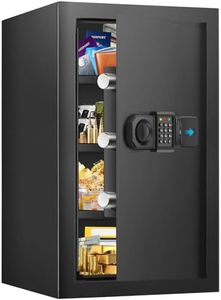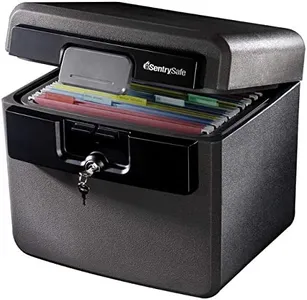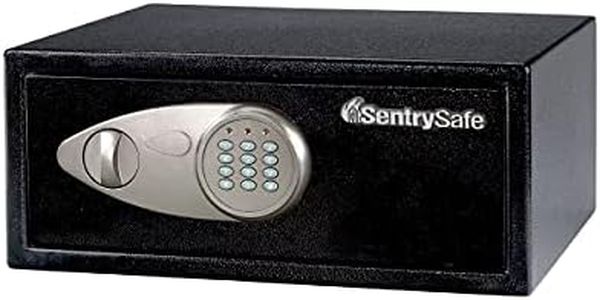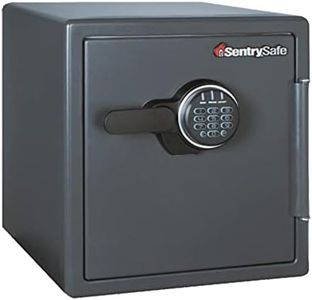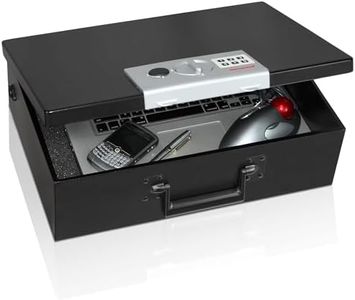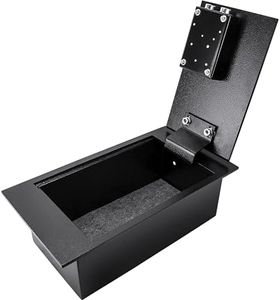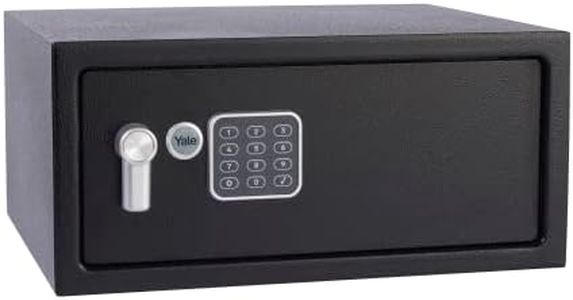We Use CookiesWe use cookies to enhance the security, performance,
functionality and for analytical and promotional activities. By continuing to browse this site you
are agreeing to our privacy policy
10 Best Fireproof Safes
From leading brands and best sellers available on the web.By clicking on a link to a third party's website, log data is shared with that third party.
Buying Guide for the Best Fireproof Safes
Choosing a fireproof safe is an important step in protecting your valuable documents, money, and possessions from fire damage. Because not all safes are created equal, it's essential to understand the key features that determine a safe's level of protection. Take into account where you plan to place the safe, what types of items you want to protect, and any specific risks in your area such as high temperatures or risk of water exposure. Understanding the main specifications will help you find the right safe for your needs, whether it's for home or office use.Fire RatingFire rating refers to how long a safe can protect its contents from high temperatures during a fire. This rating is usually given in minutes or hours, typically ranging from 30 minutes up to 2 hours or more. The higher the fire rating, the longer the contents inside the safe will stay protected if a fire occurs. To choose the right fire rating, consider what you need to store. For important documents and cash, a minimum of 30-minute protection may be enough, while for sensitive items like digital media, a higher rating (such as 1 hour or more) is more suitable. Also, think about how quickly emergency services can respond to fires in your area—if longer response times are common, opt for a higher fire rating.
Internal Temperature LimitInternal temperature limit is the maximum temperature that the inside of the safe will reach during a fire. This is crucial because different items can be damaged at different temperatures; for example, paper chars at around 350°F (177°C) while digital media is more sensitive and can be damaged at temperatures as low as 125°F (52°C). Safes are usually classified by their ability to keep internal temperatures below these thresholds. Knowing what you plan to store guides your decision: choose a safe rated for lower internal temperatures if you need to store items like USB drives, CDs, or microfilm, and a regular document safe for paper-based items.
Water ResistanceWater resistance describes how effectively a safe can protect its contents from water, whether due to firefighting efforts or floods. Some safes are both fireproof and water-resistant, providing a higher level of total protection. If your area is prone to flooding, or if you expect that water-based fire suppression systems might be used, prioritize safes that offer water resistance. Look for independently tested models that specify how long and how deep they can withstand submersion or spraying.
Locking MechanismThe locking mechanism determines how you access the contents inside the safe. Common options include traditional keys, mechanical combination dials, electronic keypads, and even biometric scanners. Each type has its pros and cons: keys can be lost, combinations can be forgotten, electronic systems offer convenience but need batteries, and biometric safes offer quick access but may not always work flawlessly. Choose a locking mechanism based on how often you need to access the safe, your preference for convenience, and your comfort with managing keys, codes, or electronics.
Size and CapacitySize and capacity refer to the physical dimensions and the amount of usable storage space inside the safe. Safes come in a variety of sizes, from compact models designed for passports and cash to large cabinets that can store binders, jewelry, and even smaller electronics. When choosing a size, consider both what you need to store now and any additional items you may wish to store in the future. Be sure the safe will fit in your chosen location and is not so big or heavy it becomes difficult to install.
Mounting and PortabilitySome safes are meant to be bolted down or mounted to the floor or wall, providing extra security against theft, while others are portable and designed to be moved easily. If you're worried about theft, consider a mountable safe; if you need flexibility to relocate the safe or take it with you (for example, when traveling), a portable safe might be a better choice. Assess your own level of risk and convenience needs to determine what's best.
Certification and Testing StandardsIndependent certification, often from organizations like UL (Underwriters Laboratories) or ETL, indicates that a safe has been tested and meets certain fire and water resistance standards. These certifications are important because they provide assurance that the safe will actually perform as advertised in real-world conditions. Check for labels that specify compliance with recognized standards, and use these to compare options more objectively.

